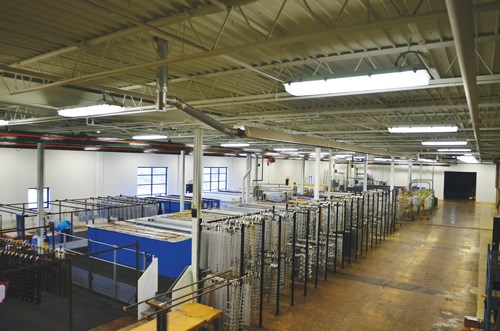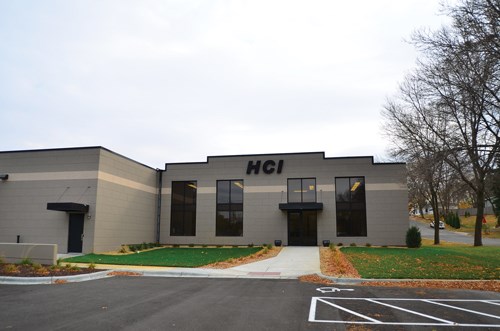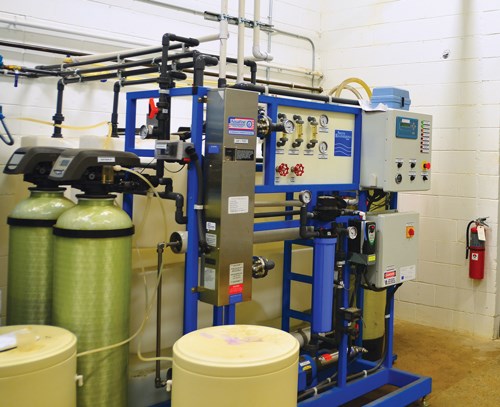Whether he realized it or not, Michael Kelner was perfectly prepared for the job when he entered the surface finishing industry as a second career a little more than five years ago.
Having spent the previous several decades as an executive in the healthcare industry, Kelner decided in 2007 to invest in a hardcoat aluminum anodizing shop in Minneapolis, despite having no coating experience whatsoever.
Suffice to say, he started out on the ground floor.
“I did it all when I got here, just so I could learn what needed to be done every step of the way,” says the owner of Hardcoat Inc. “I racked parts, helped run lines and did what everyone else was doing so I could understand the business.”
But falling back on his corporate healthcare industry experience, Kelner soon determined that his new business—at the time just seven employees and himself—needed to shape up and prepare a path for growth.
Getting Certified
Several customers suggested Kelner should become NADCAP-certified, a global cooperative accreditation program for aerospace engineering, defense and related industries, including finishing. The rigorous testing and standards would help open up channels for his company, setting it apart from other shops that weren’t ready to take that next step.
And as Kelner looked around his shop floor—straight out of a 1970s catalog for finishing equipment and systems, it seemed—he also knew that things had to be changed, rebuilt, expanded and brought up to speed for the demand he hoped would follow.
“I had to do something for us to grow,” Kelner says. “We couldn’t stay the way we were with the equipment and resources we had and expect to set ourselves apart from other shops we were competing against.”
Today, after investing more than $4 million and 10 months after construction started, Kelner has new equipment in a relocated and refurbished facility. It’s a growing business that has opened up avenues to serve new industries, with advanced anodizing lines designed for MIL-A-8625 Type II and III, as well as hex chromes, and RHOS-compliant tri-chrome and masking, and additional plans to expand into passivation.
Building a Spectacular Shop
“Any shop in America would be proud to have what Mike has set up,” says Drew Nosti from
Anodize USA, Inc., whom Kelner brought in to help design and install the new lines. “It’s spectacular. I brought a firm over from Romania to see it, and they were blown away by it. It’s beautiful.”
But it wasn’t necessarily an easy—or cheap—road that Kelner followed.
More than two years ago, he set out to change his company’s direction by literally tearing down the walls that stood in his way.
Locked in to space the company was renting in the city of St. Louis Park, Minn., Kelner bought the building across the street to renovate and modernize; but this came with its own set of headaches. Hardcoat’s new location formerly was a 40,000-sq-ft steel heat-treating plant that was in significant disrepair and was saddled with major building code issues.
“To put it mildly, it was a dilapidated, hazardous site,” Nosti says. “And that’s being kind.”
Funding Issues & Assistance
Kelner put his business plan and a pro forma together and paid a visit to his local bank, explaining how expansion, Nadcap, and sweat from Kelner and his employees would make the plan work. He explained his goals, and the bank sent him away. The next one did, too. And a third.
The U.S. economy was still reeling from its financial bust, and that fallout was making banks think twice about approving loans. Kelner finally found one bank who liked his idea, however, and another willing partner in the project: St. Louis Park city officials who knew the former Flame Metal building was an eyesore. Those officials had always wanted to find someone to renovate the building, and then along came Kelner with his blueprints and determination.
Kelner’s plans were to spend about 1.5 times more than he paid for the building in order to gut, remodel and bring it up to code, and still be able to replace and install an entirely new anodizing line, other production equipment and office space for the company’s anticipated growth needs.
St. Louis Park officials knew a great deal when they saw it and gave Hardcoat a $500,000 grant through a Construction Assistance Program in exchange for Kelner fixing up the eyesore, employing more people and generally sprucing up the area.
The city estimated the property would jump in value to more than $2.5 million (read: more tax money) and the employee payroll tax (read: even more money) would also finance the deal, along with a Tax Increment Financing plan to divert almost $200,000 from the property’s annual tax payments over the coming years back to the city coffers.
Soon, walls were knocked down, new plumbing was installed and Nosti was designing the anodizing lines to be some of the greenest, most ecologically sensitive anywhere.
More Capacity
Kelner had met Nosti several years earlier and had called on him to help plan and build the system. Nosti knew that upgrading the lines to be more efficient would more than double Hardcoat’s output immediately.
“I talked Mike out of a fourth anodizing tank because he just doesn’t need it with the improved capacity he has now,” Nosti says. “We have the same amount of tanks, but we are getting so much more than what we had before in terms of production.”
Case in point: In the old setup, Hardcoat’s staff had to wait almost two hours for a tank to get down to the appropriate temperature. A new chiller was installed that makes that time minimal, thus improving throughput.
“Right now, the rackers can’t rack fast enough,” Nosti says.
The new system also was designed to minimize effluent and recycling. The new facility has its own waste-treatment plant on the property, and the recycling process has a built-in acid purification system that enables Hardcoat to purify the shop’s three anodizing tanks on a continuous basis, recycling unwanted waste.
“We no longer have to shut down any part of our tank line in order to properly dispose of any alien items in our solutions,” Kelner says. “We no longer use a transport system to take the raw materials out of the plant, and having it done internally and continuously is a big benefit to our processing time, and a huge cost savings.”
The facility uses steam heat instead of electric for the tanks, and also has its own water creation system that lets the plant use water from Hardcoat’s on-site well for bath makeup, then converts this untreated water into both reverse osmosis and deionized water.
A 10-Month Project
The demolition and construction of the new building took just over 10 months, from November 2011 to August of this year. Hardcoat shut down its lines at the old plant on a Thursday afternoon and moved a few items, such as rectifiers and racking materials, over to the new plant. Employees worked all weekend with Nosti to get the line up and running, and by Tuesday were anodizing their first parts on the new lines.
The equipment and technology changes were very apparent to the Hardcoat staff after they began running line parts. Gone are the lead cathos, replaced by aluminum ones. The anodizing and hardccoat tanks have heat exchangers. The new chiller, which can hold as many as 1,800 gal waiting to be pulled on demand into the tanks, keeps the temperature within a 30-34°F range, whereas the older tanks had a 30-40°F range, meaning it took more time to bring the tank back down into spec. That extra time saved means more loads can be run.
“On a good day, we could complete eight loads of hardcoat per eight-hour shift in two tanks, and most of the delay was due to having to get the temperature back to 30°F, which is required for optimal operating parameters,” Kelner says. “Now we can do in the same number of tanks up to 16 loads in an eight-hour shift, and they’re bigger tanks so we can get more material in it.”
With the kinks worked out, a dedicated staff that is invested in the company through profit-sharing, and a chance to pull in new work through improved capacity, Kelner is excited for the days that lay ahead for Hardcoat.
“Before all this, I saw us as just another available local anodizer you would see around town,” he says. “But this sets us apart. We have the certification, we have the capacity, and we have the facilities and the vision. I think now, when comparing us to others, we’ll always get the second look.”
For information on HardCoat Inc., please visit Hardcoatinc.com. For information on Drew Nosti and Anodize USA, please call 843-832-8931.




















